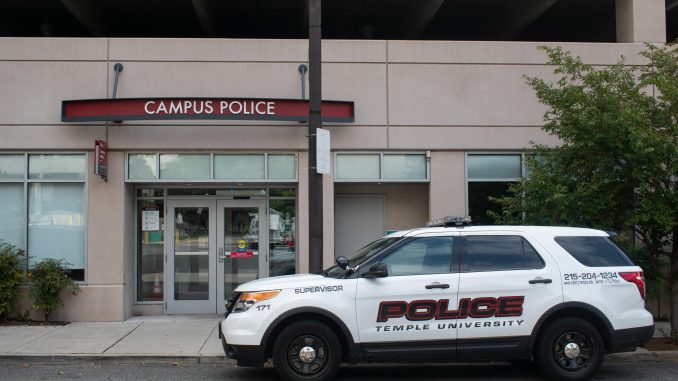
A labeled Temple University Police car, with a loaded AR-15 locked inside a safe, was temporarily stolen, on Sunday, Sept. 12, and driven around North Philadelphia for nearly 30 minutes, 6ABC reported. The Temple News inquired about the presence of military-grade rifles on Temple police officers and their use within the department.
TUPD armed its officers with AR-15s in 2013 due to a rising number of active-shooter incidents across the nation, said Charles Leone, executive director of campus safety services. The department is equipped with an undisclosed number of the semi-automatic rifles to combat these instances. While there was not an active shooter the night the labeled police car was stolen, an AR-15 was locked up in the rear of the vehicle in a mounted safe, he said.
All police department vehicles are capable of carrying AR-15 rifles, but only a subset of officers each shift are trained and certified to access an AR-15, Leone said.
“Roughly 20 percent of our officers have access to an AR-15 each shift in the case of an active shooter,” Leone said.
Specific guidelines for accessing an AR-15 are at the discretion of individual police departments, said Anthony Erace, acting executive director of the Philadelphia Police Advisory Commission.
No one entering the police vehicle can access the gun safes without authorization, which comes in the form of a key or an electronic lock, Leone said. The woman who stole the patrol car on Sept. 12 did not access the gun’s safe.
Active-shooter incidents increased exponentially nationwide from 2000 to 2019 with three incidents in 2000 and 30 in 2019, according to the FBI’s 2000-2019 Active Shooter Review.
“It is safe to assume that most, if not all campus police departments have these styles of weapons,” Erace said.
An AR-15 is a lightweight semi-automatic rifle, meaning the shooter must pull the trigger to fire each shot, but a bump stock can be added to the rifle to simulate automatic rifles that fire shots consecutively, National Public Radio reported. TUPD does not add bump stocks to their rifles, Leone said.
The department began training in active-shooter scenarios prior to the 2007 mass shooting at Virginia Tech University that killed 32 people and first equipped purchased AR-15s in 2013, Leone said.
“ The more time it takes law enforcement to respond and stop the actor(s), the more people are seriously injured or killed,” wrote Leone in an email to The Temple News.
All Temple police officers receive active-shooter training, but half of the current police force has received the additional training to access an AR-15, Leone said. These trainings focus on accuracy in shooting, proper storage of the weapon, use of cover and shooting stances.
TUPD trains their officers using computer simulations to prepare for the possibility of a mass-shooting scenario on Main Campus, The Temple News reported.
TUPD officers used this training when they responded to an active-shooting incident in 2019 at a house at 15th Street and Erie Avenue, Leone wrote.
Officers with appropriate training at the University of Pennsylvania Police Department are also equipped with AR-15 rifles and other semi-automatic weapons in the case of an active-shooter incident, said Maureen Rush, vice president for public safety and superintendent of UPPD.
An AR-15 is “not something you hope to use, but something you need to use” in the case of an active shooter, Rush said.
UPPD declined to comment further on the quantity and specifics of their weapons.
Incidents like the 1999 Columbine High School Shooting led police departments across the country to reevaluate their response to active-shooter incidents, Erace said. Prior to the shooting, officers would rush toward gunfire and not operate as a unit to distract and isolate an active-shooter.
The dangers of AR-15s in the hands of police depends on the culture of the department, Erace said.
“Do you want a brutal racist police officer carrying an AR-15?” Erace said. “Not really. But it all depends on the culture and training of the police department we are talking about.”



Be the first to comment